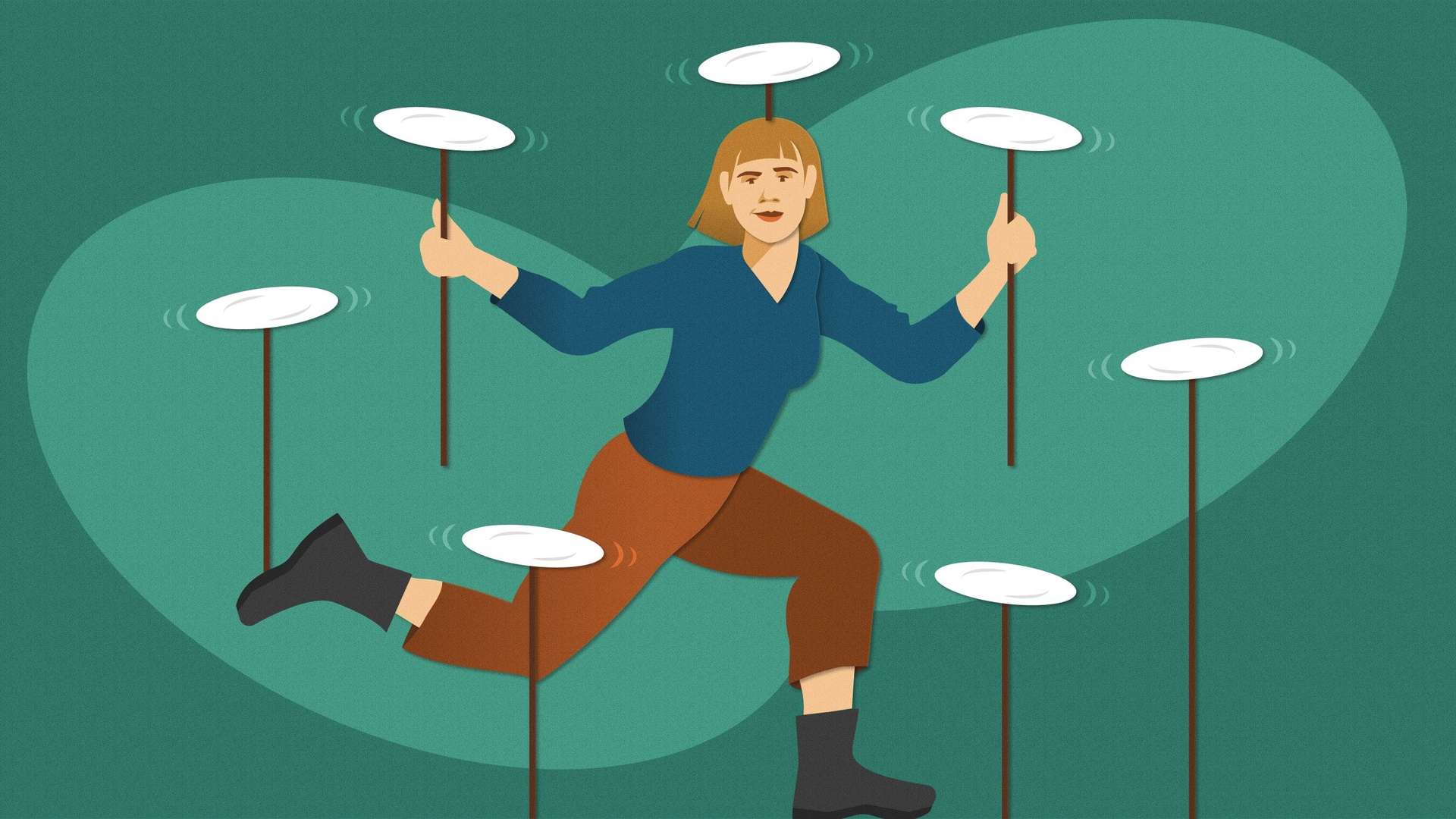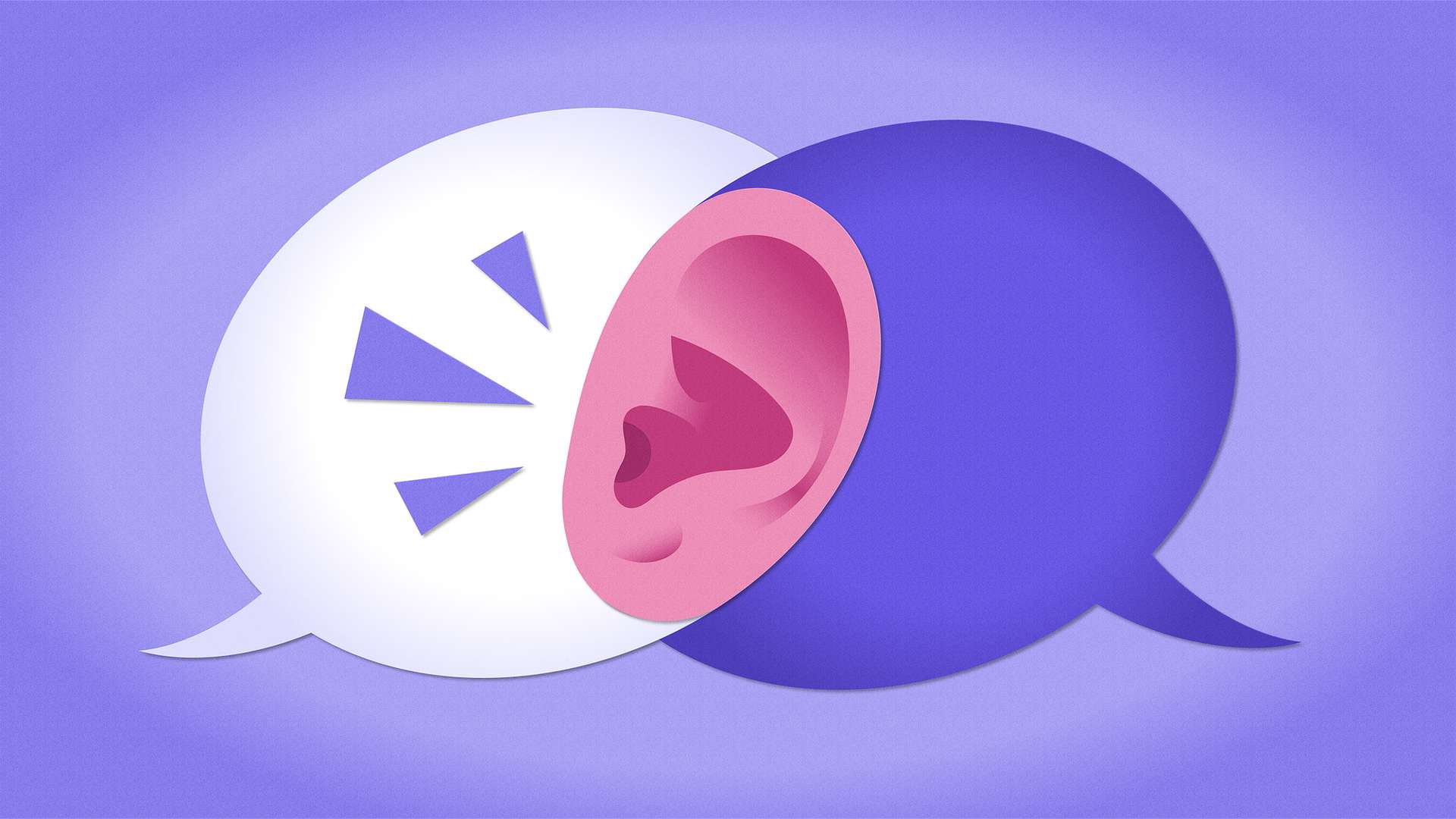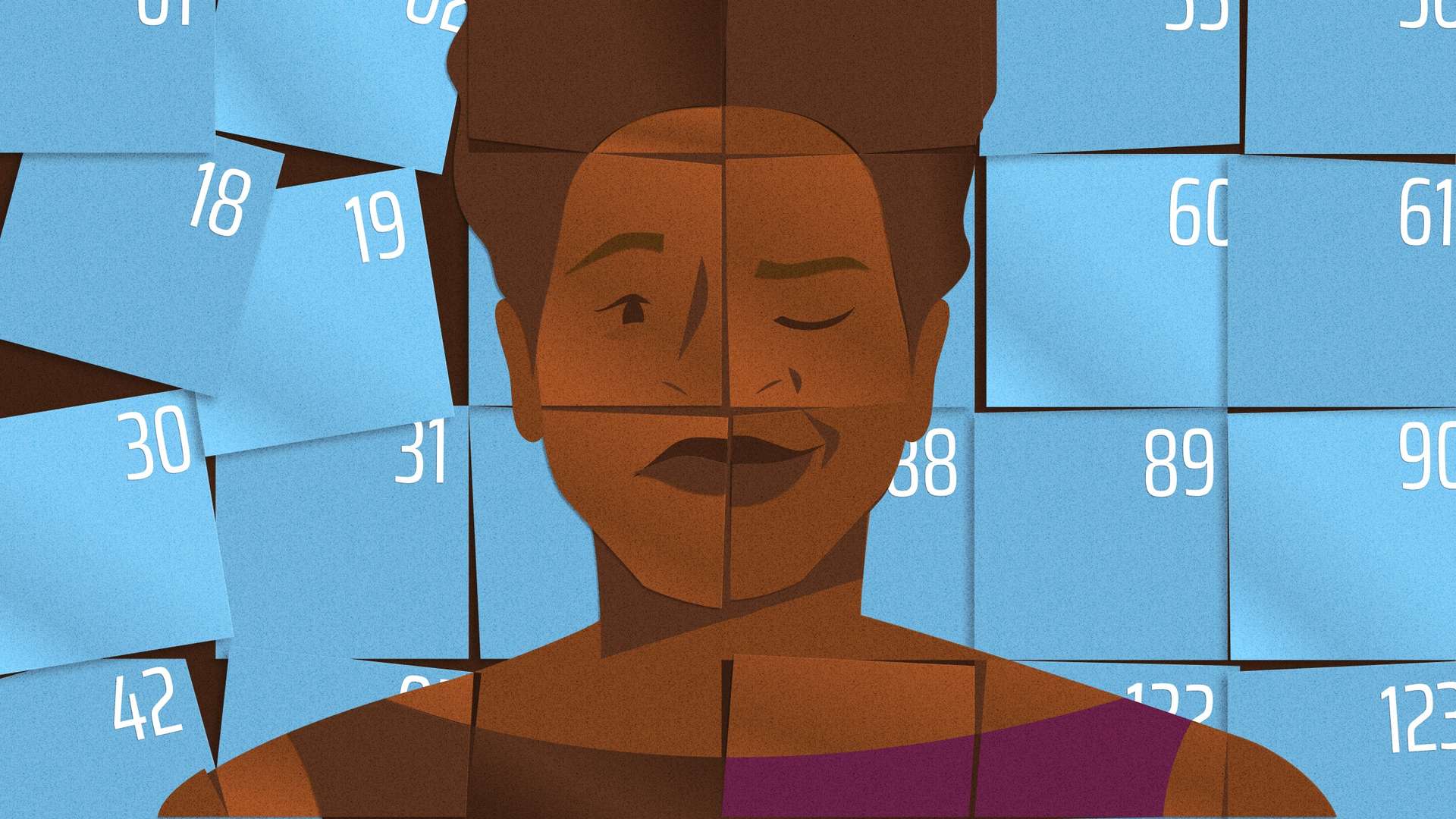Some people thrive in the fast-paced world of client work. They like the challenge; the act of balancing tasks for multiple teams, the needs of multiple stakeholders, and starting something new every few months. But agency work isn’t for everyone. Other people, like me, can only handle the hustle for so long before feeling a little burnt out or in need of change.
Transitioning to product is often the natural next step for designers and other UX professionals who have worked at agencies. Like me, they might seek the stability and structure of a product team, or the emphasis on users over clients. They might feel drawn to the process of continuous iteration and governance, or the ability to concentrate on a single area of focus, instead of having to be a jack of all trades. Or maybe they want the guidance of a mentor, which can propel a career.
Regardless of the reason, the transition can be tough. Despite how demanding agency work is—and the many soft and hard skills you develop doing it—interviewing for a product position can feel like an audition, especially if your interviewer doesn’t have similar experience in client services. In an interview, the skills required for any UX role come under (justifiably) heavy scrutiny, but gaps in experience can look wider than they actually are.
So which word defines the needs of the role more: “product” or “designer?” Here are my thoughts and those of other former agency UX professionals who now work at Indeed. Please take them as our personal opinions, not as career advice.
Agency work is chaos
My entire career in Japan I’ve been a UX designer, and my time in agencies was a whirlwind. One big difference between the client-service industry here and the one in the US, where I’m from, is how the customer is treated. In the US, “the customer is king,” but in Japan, “the customer is god.” This cosmic-scale hyperbole means there’s almost nothing a customer can’t ask for once a contract has been signed, because businesses will try nearly anything to guarantee satisfaction.
I found that during a typical project timeline at a Japanese agency, teams and clients often communicated feedback through brightly colored and eccentrically organized excel spreadsheets. Sometimes we’d receive an overwhelming but direct laundry list of mostly tedious requests. Other times we got vague and ominous feedback, with confusing statements like “it doesn’t feel right” or “we want more of a global perspective.” I know empathy is an important part of a designer’s job, but I’m not a mind reader. Feedback like this led to exceedingly polite but ultimately unproductive email exchanges, and late nights staring at my monitor.
When a project neared completion, savvy clients accepted proposals for final QA sessions and user testing with their target demographics. But most didn’t think it was worth the time or monetary investment—especially if the project started with any sort of market or discovery research. The result was often a deliverable that may or may not solve a user’s problem. But who has time to worry about that when there’s a kickoff for a new project after lunch? Fellow Indeedian and former agency designer UX Director Chad Currie attributes this attitude to the money:
“At an agency, it’s ultimately the relationship with stakeholders that determines your fortune, regardless of the impact on the user. That paying client structure builds habits that put the stakeholder at the center of decision-making, for better or worse.”
Agency work is also fun—and a great way to learn
Agency life wasn’t all doom and gloom, of course. What I loved most about the work was the speed and variety I mentioned earlier. (This ultimately drove my choice to join an Incubation team at Indeed, too.) From fintech to food delivery apps to eSports broadcasting, I got to play in a lot of different spaces as an agency designer. Each time my team kicked off a new project it was a fresh start. New goals, new deadlines, new branding, new stakeholders, new businesses to learn about. It was a balancing act of time management, client communication, and staying within the budget. Indeed Senior Content Designer Laura Scullin found a similar satisfaction in the diversity of the client-service industry:
“I liked seeing more things go live or become finished products sooner. I also liked the breadth of problems I got to work on. I was able to influence all parts of the process and operate as a truly multidisciplinary unit.”
I enjoyed juggling multiple projects at the same time, constantly reordering the to-dos listed out in my head while also executing on multiple iterations of one design to present to clients. I learned what was okay to push back on, and when to back off and give the client what they wanted. I participated in critiques with designers in other disciplines and learned how to make the most of our time together. Indeed UX Developer Eric Weinberger also found ways to grow while struggling to meet picky client demands:
“Clients can want things a very particular way, and you have to deliver exactly that. I got used to having to really nail a website deliverable matching the design that was pitched, even when it wasn’t easy. This got me comfortable collaborating with designers, especially when I discovered a hidden complexity. It trained me to look ahead for potential implementation problems with a design.”
But in the end, I burned out from managing the needs of so many different stakeholders. It felt like Japanese agencies were more focused on the bottom line than anything else. That led to a huge drop in my morale, productivity, and general work-life balance—something that motivated me to look for a role in product.
Product teams tend to misunderstand agency designers
As a senior designer on my team, I’ve started to take an active part in our team’s hiring. I’ve seen designers in the same position I was in several years ago—tired of the agency grind, ready to focus on the user and long term goals of a single product. I also can’t help but flash back to my own interview experiences when trying to transition from agency to product. Emails from recruiters with rejection reasons including:
- “The candidate doesn’t have experience working with [specific role]”
- “The candidate doesn’t have experience owning a product feature”
- “The candidate has little knowledge of what metrics changed once they handed over deliverables”
Rejection at the end of the interview process always hurts, but reasons like these can be really disheartening because it feels dismissive of the bigger picture. Why is working directly with one specific role in the past better than being a strong presenter and communicator? Why do I need to have experience owning a product feature when my portfolio displays a competent and thorough understanding of the end-to-end design process? Why aren’t my hard and soft skills considered a better indicator for success since they’re what form the strong foundation of any designer? UX Design Manager Michelle Peterson expressed a similar frustration when reminiscing about interviewing for product roles:
“I felt like I had to prove over and over throughout the interview loop that I could work within a product team. That the knowledge I had from working in agencies was sufficient to do the job, and that I could learn the nuances of product work as I did the fundamental UX work.”
I started to wonder: why are hiring committees so concentrated on specific experiences instead of the individual? Several years removed from my agency days, I can confidently say it prepared me to function in my current role with plenty of room to grow. Simply working side-by-side with an engineer doesn’t necessarily make someone a good communicator, a good problem solver, or a flexible thinker. I was able to develop those skills interacting with clients and teammates.
Skills are transferable. Structures are learnable. As a newly initiated participant in the world of hiring, I keep these as my guiding principles when evaluating candidates.
It’s these granular criteria that make the interview process feel more like an audition than an assessment. My portfolio had to tell the right story in the right way, and I had to use product terms to describe parallel interactions with cross-functional peers. It felt inflexible, as if the wrong story would disqualify me in an instant. I wanted to rely on my fundamentals—good design and good communication—rather than my ability to morph into the designer persona a particular team was looking for.
Indeed UX Lead Designer Stephanie Hagadorn reflected on what in-house interviewers are really trying to learn. Once you’re on a product team, she says, “you have to ‘speak’ PM, engineering, and leadership. Each audience has a distinct way of thinking about a problem and you have to speak their language to get everyone aligned.”
–
Is this article helpful? Subscribe to get occasional emails with new stories like it.
–
Agency work teaches the fundamental skills product designers need
Sometimes I think back to one of the early product interviews I went through. After getting through the initial three rounds of one-on-one interviews, the company asked me to do a test day. This involved working for at least eight hours with my potential future team to create some mock-ups for a new app feature. Then I had to present the work in my second language to the entire team at the end of the day. The presentation came and went and the two hiring managers met with me before I left, looking excited. They told me I did a great job, that they were really looking forward to the comments from the rest of the team, and that they’d get back to me by the end of the week.
I left that interview feeling exhausted but hopeful. With a skip in my step and a few company stickers in my pocket, I looked forward to getting the all-clear a few days later. Unfortunately, what I got back was something along the lines of, “Sorry, but one of the team members didn’t think you had enough experience working on a product team to fit the role.”
Good designers are the sum of all of their experiences, not just ones specific to future roles.
I heard similar stories from the others I talked to for this story. “I faced the usual hurdle: that many product companies require some product experience before joining,” Indeed UX Content Designer Cassie Chorn told me when I asked about her move from an agency to a product role. It’s a catch-22 of the design world.
Skills are transferable. Structures are learnable. As a newly initiated participant in the world of hiring, I keep these as my guiding principles when evaluating candidates. It’s a lot harder to teach soft skills than it is to teach someone a new vocabulary, or how their new team is structured and what stakeholders they’re accountable to. When I asked other agency transplants what they thought their most transferable skills were from agency life, they answered with a list of skills every good designer needs:
- Scoping and defining work
- Using design thinking to solve a broad range of problems
- Planning and execution
- Presenting work to teammates and clients
- Stakeholder management
- Communicating design decisions
- Time management, prioritization, and estimation
All of these hard and soft skills are integral to being a successful designer on a product team, not just at an agency. In my experience, if someone can communicate successfully with an unruly client, then they can do the same with a stubborn team member too. As Indeed Senior Content Designer Laura Scullin put it:
“Designers at agencies have applied a deep set of skills to a broad range of problems, so we can build off of that foundation to find solutions more quickly. Generally, I find agency designers can cast a wider net of explorations to find a more creative solution faster. I also find that agency designers can articulate their explorations to other team members in ways that tie the design to the user need, business problem, design system, and product roadmap.”
These are the strengths of an agency background.
Teams that don’t hire agency designers are missing out
Before starting my career in UX, I worked full-time serving and bartending in restaurants. Long hours, late nights, and an aching lower back from standing all day were just a few of the constants during that time. It was fast-paced and sometimes thankless, but there were perks, too.
Despite the stress and financial instability I felt at the time, working in the service industry taught me humility, patience, grace, and perseverance. It put on display the many faces of humanity, which can change many times over the course of a simple dinner reservation. Ultimately, it made me a more understanding and empathetic person.
Similarly, I don’t regret my time working as an agency designer. I wasn’t cut out for the environment, but it taught me how to be a better communicator, a more efficient worker, and a strategic planner, among many other things. If you’re responsible for building teams, I encourage you to evaluate exactly what you’re looking for and where you might find it. Good designers are the sum of all of their experiences, not just ones specific to future roles. We come from all sorts of places, and I hope we as an industry choose to put the emphasis back on “designer” over “product.”





